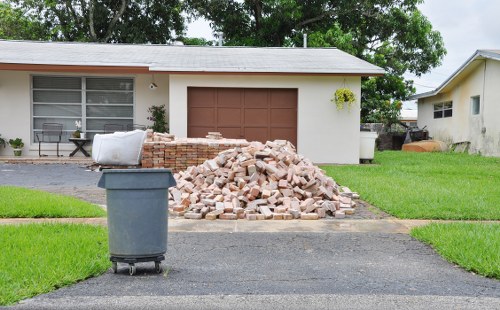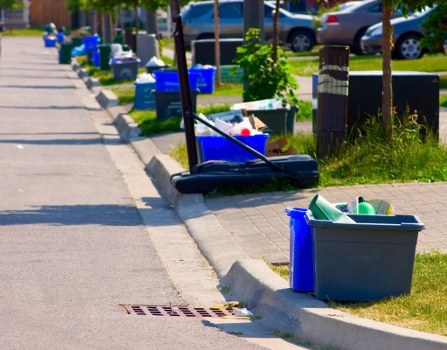Comprehensive Guide to Waste Disposal in Central London

Proper waste disposal in Central London is essential for maintaining the cleanliness and sustainability of one of the world's busiest metropolitan areas. With a population exceeding 8 million in the Greater London area, managing waste effectively is a significant challenge that requires coordinated efforts from both the government and residents.
Central London, known for its iconic landmarks, bustling business districts, and vibrant communities, generates a substantial amount of waste daily. From residential waste to commercial and industrial byproducts, the diversity and volume of waste necessitate a comprehensive waste management strategy.
Implementing efficient waste disposal systems not only helps in reducing the environmental impact but also promotes recycling and resource recovery. This article delves into the various aspects of waste disposal in Central London, highlighting the methods, regulations, and best practices that contribute to a cleaner and more sustainable urban environment.

Types of Waste Generated in Central London
Understanding the different types of waste is crucial for effective management. In Central London, waste can be broadly classified into the following categories:
- Residential Waste: This includes household trash such as food scraps, packaging materials, and other everyday refuse.
- Commercial Waste: Generated by businesses, offices, restaurants, and retail establishments, this waste often includes paper, plastics, and organic waste.
- Industrial Waste: Produced by factories and manufacturing plants, industrial waste can be hazardous or non-hazardous and requires specialized disposal methods.
- Construction and Demolition Waste: Debris from construction sites, including concrete, wood, metals, and other materials.
- Green Waste: Organic waste from gardening and landscaping, such as leaves, grass clippings, and branches.
Each type of waste demands specific disposal techniques to ensure environmental safety and compliance with regulations.
Effective categorization and segregation at the source are vital steps in minimizing the overall waste footprint and enhancing the efficiency of recycling programs.

Waste Disposal Methods in Central London
Recycling
Recycling is a cornerstone of waste management in Central London. The city promotes the separation of recyclable materials such as paper, glass, metals, and certain plastics. Specialized recycling centers facilitate the processing and repurposing of these materials, reducing the need for raw material extraction and lowering greenhouse gas emissions.
Composting
Organic waste is diverted to composting facilities where it is transformed into nutrient-rich compost. This process not only reduces landfill use but also supports urban gardening and landscaping initiatives.
Incineration
For waste that cannot be recycled or composted, incineration is employed. Advanced waste-to-energy plants in Central London incinerate non-recyclable waste, generating electricity and heat in the process. This method significantly diminishes the volume of waste destined for landfills.
Landfill Disposal
Although landfill use is minimized, it remains a necessary component of the waste management hierarchy. Controlled landfills are equipped with liners and leachate management systems to prevent environmental contamination.
Each disposal method is selected based on the type of waste, environmental considerations, and regulatory compliance requirements, ensuring a balanced approach to waste management.
Continuous advancements in waste treatment technologies are enhancing the efficiency and sustainability of these disposal methods.

Regulations and Policies Governing Waste Disposal
Central London adheres to stringent waste management regulations aimed at safeguarding public health and the environment. Key legislative frameworks include:
- London Environment Strategy: Establishes the overarching objectives for environmental sustainability, including waste reduction targets and recycling goals.
- Waste Framework Directive: An EU directive that sets the basic concepts and definitions related to waste management, applicable to the UK and, by extension, London.
- Local Council Regulations: Specific guidelines and ordinances enacted by the Greater London Authority and individual boroughs to manage waste disposal effectively.
Compliance with these regulations ensures that waste disposal practices align with best practices in environmental stewardship. Non-compliance can result in hefty fines and legal repercussions for businesses and individuals alike.
Furthermore, the city's policies encourage public participation and awareness through education campaigns and incentives for sustainable waste practices.
Collaborative efforts between government bodies, businesses, and the community are pivotal in achieving the established waste management goals.

Innovative Practices and Future Trends
The landscape of waste disposal in Central London is continually evolving, driven by technological advancements and a growing emphasis on sustainability. Some of the innovative practices shaping the future include:
- Smart Waste Bins: Equipped with sensors, these bins monitor waste levels in real-time, optimizing collection routes and reducing operational costs.
- Circular Economy Initiatives: Focused on minimizing waste by designing products for reuse, recycling, and remanufacturing, thereby extending their lifecycle.
- Advanced Recycling Technologies: Techniques such as pyrolysis and biotechnological processes enhance the efficiency of material recovery and recycling.
- Public-Private Partnerships: Collaborations between municipal authorities and private enterprises foster innovation and resource-sharing in waste management.
Looking ahead, Central London aims to achieve zero waste by implementing comprehensive strategies that integrate these innovations into the existing waste management framework.
Ongoing research and development initiatives are essential in addressing emerging challenges and improving the overall efficacy of waste disposal systems.
The commitment to sustainability and environmental responsibility remains at the forefront of waste management policies, guiding the city towards a greener and more resilient future.

Community Involvement and Education
Engaging the community is vital for the success of waste disposal initiatives. Educational programs and awareness campaigns inform residents about the importance of waste segregation, recycling, and reducing waste generation. Local workshops and seminars provide practical knowledge and encourage active participation.
Volunteering opportunities and community clean-up events foster a sense of responsibility and collective action towards maintaining a clean urban environment.
By empowering individuals with the necessary tools and information, Central London promotes sustainable waste practices that contribute to the overall well-being of the city.

Conclusion
Waste disposal in Central London is a multifaceted challenge that requires a blend of effective strategies, regulatory compliance, technological innovation, and community engagement. By adopting comprehensive waste management practices, the city not only tackles the immediate concerns of waste accumulation but also paves the way for a sustainable and environmentally friendly future.
Continuous improvement and adaptation to emerging trends will ensure that Central London remains at the forefront of urban waste management, setting exemplary standards for other cities worldwide.








